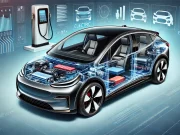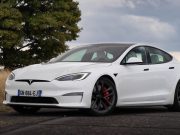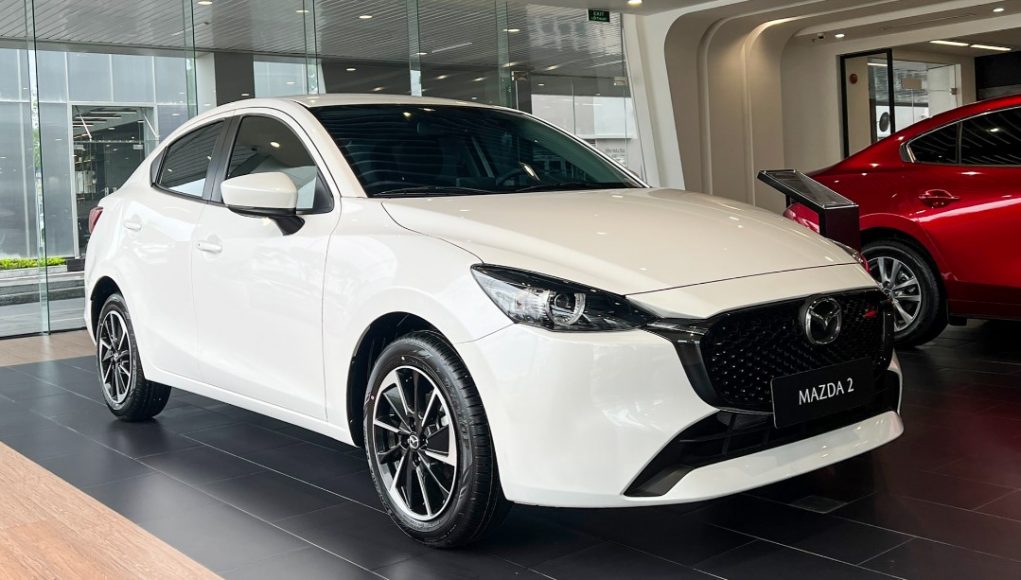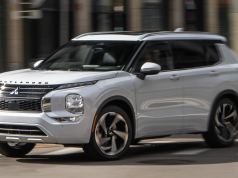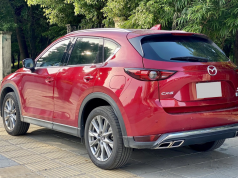The Mazda 2 AT is a compact and stylish vehicle that has garnered positive attention for its design, efficiency, and practicality. This article provides a detailed review of the Mazda 2 AT, including essential accessories to consider, those to avoid, and an overall assessment of the car.
Basic Information about the Mazda 2 AT
- Price: Approximately 479 to 599 million VND depending on the variant.
- Engine: 1.5L gasoline engine producing 110 horsepower and 141 Nm of torque.
- Transmission: 6-speed automatic transmission.
- Dimensions: 4,060 mm (length) x 1,695 mm (width) x 1,495 mm (height).
- Safety Features: ABS, EBD, BA, electronic stability control, hill-start assist.
- Interior Features: 7-inch touchscreen, 6-speaker audio system, automatic climate control.
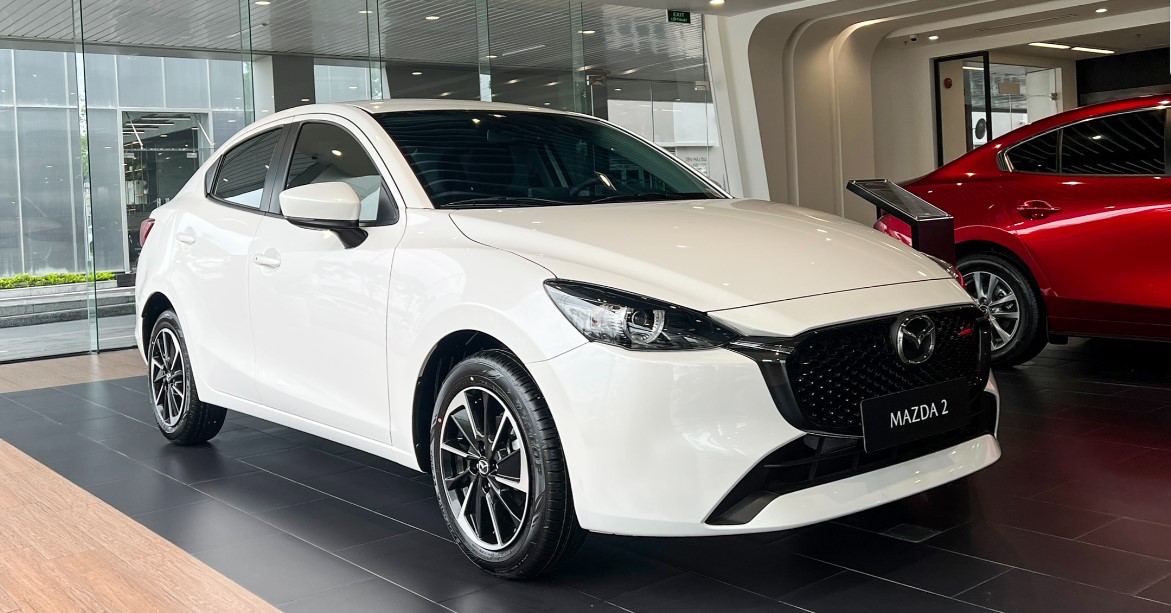
Recommended Accessories for the Mazda 2 AT
1. Dash Cam (Camera Hành Trình)
Benefits: Records your journey, ensures safety, and provides evidence in case of accidents. Cost: Approximately 2-5 million VND. User Experience: Many users find dash cams indispensable for peace of mind and security on the road.
2. Rubber Floor Mats (Thảm Lót Sàn Cao Su)
Benefits: Easy to clean, protects the car’s floor from dirt and water. Cost: Around 500 thousand to 1 million VND. User Experience: Highly recommended for maintaining cleanliness, especially in wet or muddy conditions.
3. Window Tinting (Dán Phim Cách Nhiệt)
Benefits: Reduces heat inside the car, protects the interior, and increases privacy. Cost: About 2-4 million VND. User Experience: Essential for comfort, especially during hot seasons.
4. Tire Pressure Monitoring System (TPMS) (Cảm Biến Áp Suất Lốp)
Benefits: Monitors tire pressure, ensuring safety and optimal tire performance. Cost: Around 2-3 million VND. User Experience: Important for maintaining tire health and preventing accidents.
5. High-End Audio System (Hệ Thống Âm Thanh Cao Cấp)
Benefits: Enhances the music experience, making long drives more enjoyable. Cost: Depending on the system, between 5-10 million VND. User Experience: Audio enthusiasts find this upgrade significantly improves the driving experience.
6. Car Cover (Bạt Trùm Xe)
Benefits: Protects the car from environmental elements when not in use. Cost: Around 500 thousand to 1 million VND. User Experience: Useful for maintaining the car’s exterior condition.
7. Leather Seat Covers (Bọc Ghế Da)
Benefits: Protects the seats, enhances interior aesthetics. Cost: Approximately 3-5 million VND. User Experience: Adds a touch of luxury and durability to the interior.
Accessories to Avoid
1. Excessive Electronic Gadgets
Reason: Can overload the car’s electrical system, potentially affecting performance and safety. User Experience: Users often find that too many gadgets create unnecessary clutter and distraction.
2. Over-the-Top Decorative Accessories
Reason: Can clutter the car’s interior and detract from its aesthetic appeal. User Experience: Minimalist and functional accessories are generally preferred for a clean look.
3. Unverified Third-Party Accessories
Reason: Poor quality accessories can damage the car and void the warranty. User Experience: It is crucial to ensure accessories are compatible and of high quality.
4. Warranty-Affecting Accessories
Reason: Some modifications can void the car’s warranty. User Experience: Always check with the manufacturer or dealer before installing any aftermarket accessories.
Overview of the Mazda 2 AT
Pros
- Compact and Urban-Friendly: The Mazda 2 AT’s small size makes it ideal for city driving and parking.
- Fuel Efficiency: Offers excellent fuel economy, making it cost-effective for daily commuting.
- Modern Interior: Features a stylish and user-friendly interior with advanced technology.
Cons
- Limited Interior Space: The compact size results in a smaller cabin, which might be tight for larger families.
- Noise Insulation: Could be improved, as road noise can be noticeable.
- Moderate Power: While adequate for city driving, the engine may feel underpowered on highways compared to some competitors.
Comparison with Similar Models
Mazda 2 AT vs. Toyota Yaris
- Toyota Yaris: Higher price, more powerful engine, better after-sales service.
- Mazda 2 AT: More affordable, sportier design, better fuel efficiency.
Mazda 2 AT vs. Honda Jazz
- Honda Jazz: Roomier interior, more advanced safety features.
- Mazda 2 AT: Sleeker design, better fuel efficiency, lower price point.
FAQs
1. What are the fuel efficiency ratings of the Mazda 2 AT? The Mazda 2 AT is known for its excellent fuel economy, averaging around 6-7 liters per 100 km, making it an economical choice for daily commuting.
2. Is the Mazda 2 AT suitable for long-distance travel? While primarily designed for urban use, the Mazda 2 AT can handle long-distance travel comfortably, though its smaller engine may be less powerful on highways compared to larger vehicles.
3. How does the Mazda 2 AT compare in terms of interior space? The Mazda 2 AT has a compact interior, which is ideal for small families or individuals but may feel cramped for larger groups.
4. What are the maintenance costs for the Mazda 2 AT? Maintenance costs for the Mazda 2 AT are reasonable, with routine services being affordable. However, the cost of genuine parts can be higher.
5. Are there any common issues with the Mazda 2 AT? Common issues include noise insulation, which could be better, and the interior space, which might be tight for some users. Additionally, excessive installation of electronic gadgets can strain the electrical system.
Conclusion
The Mazda 2 AT is a well-rounded compact car that excels in urban environments due to its fuel efficiency, modern design, and reasonable maintenance costs. It is ideal for those seeking a stylish and practical vehicle for city driving. When considering accessories, it is crucial to focus on enhancing functionality and safety without compromising the vehicle’s warranty or performance.
Key Takeaway
The Mazda 2 AT is an excellent choice for budget-conscious buyers looking for a reliable and stylish compact car. Careful consideration of accessory installation can enhance the driving experience, but it is essential to avoid overloading the car with unnecessary or poor-quality additions.

